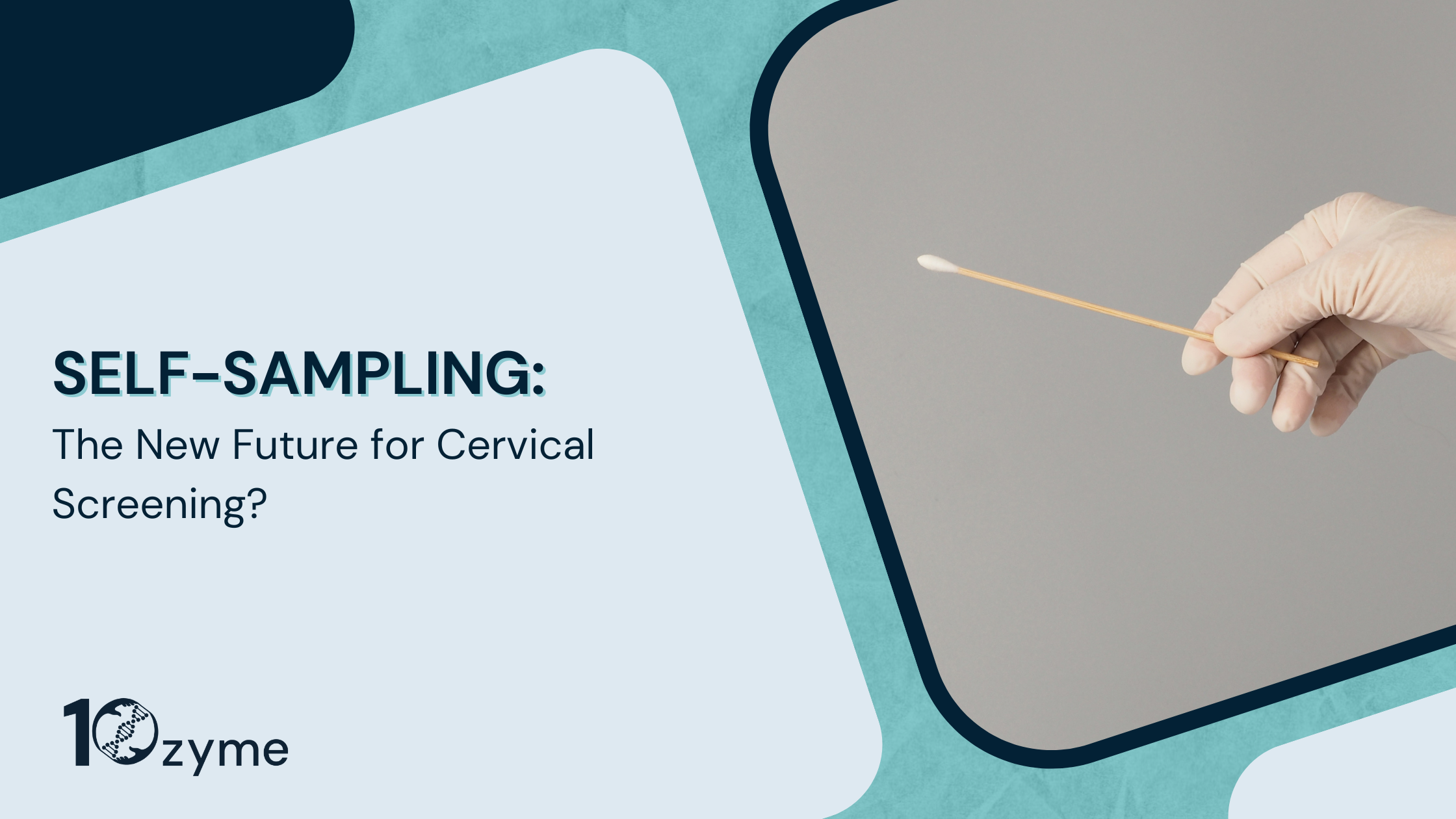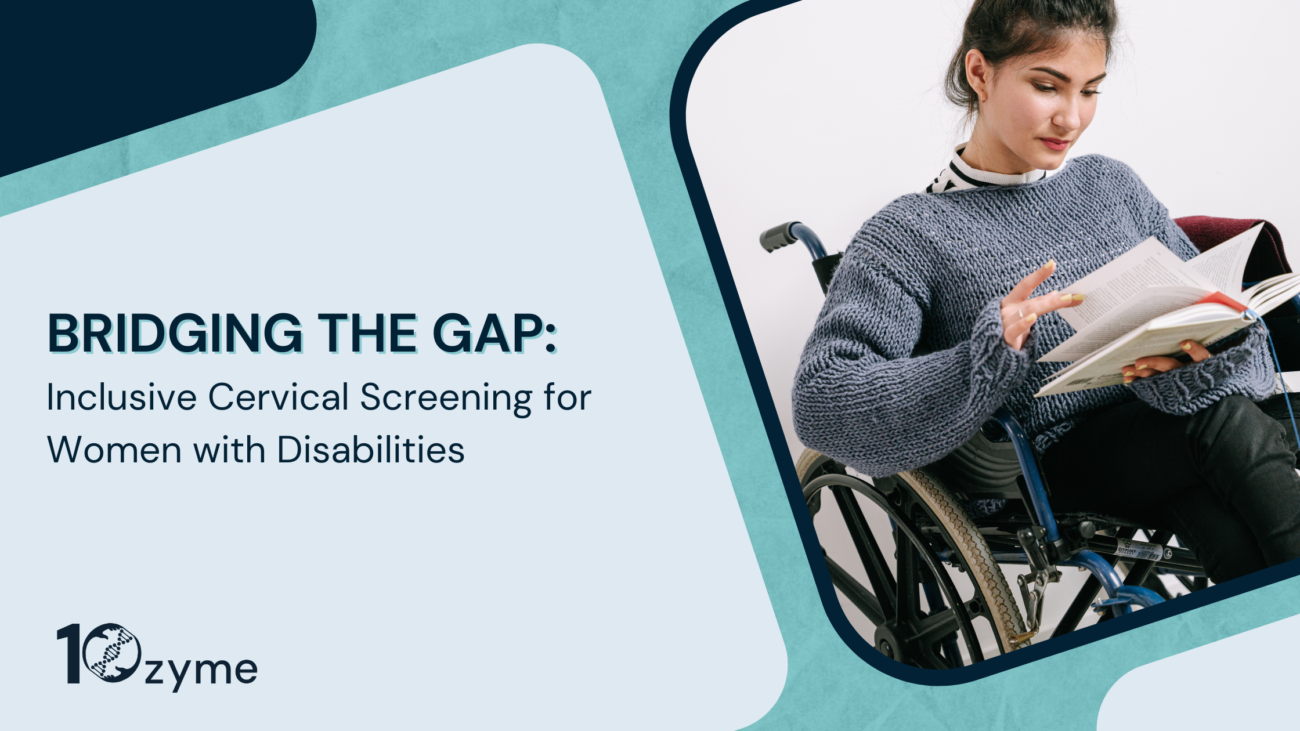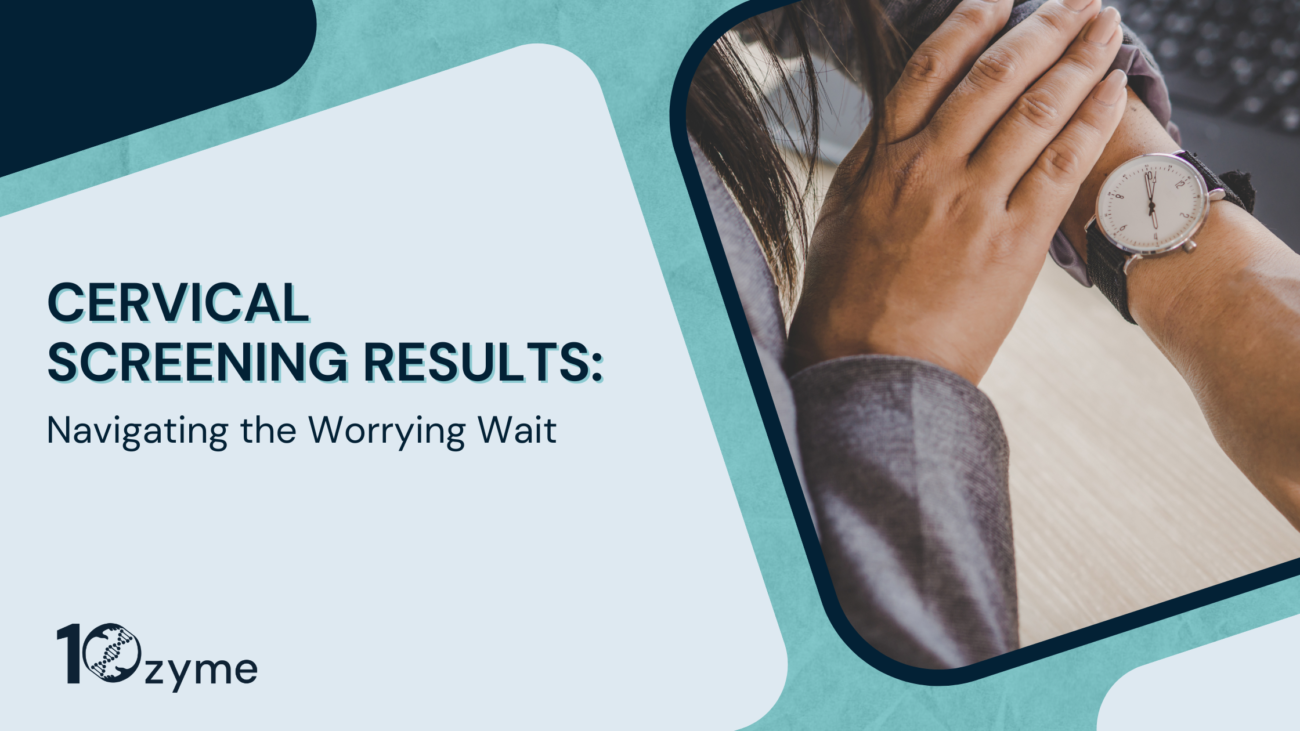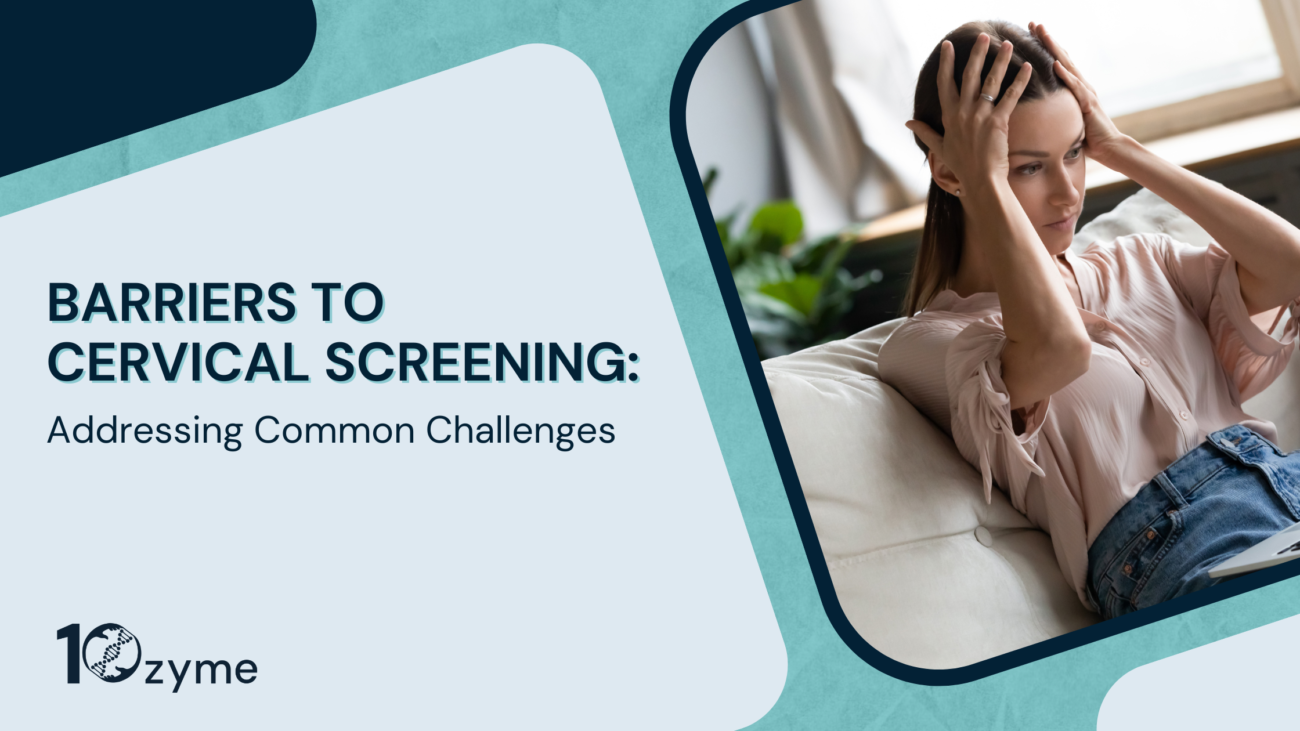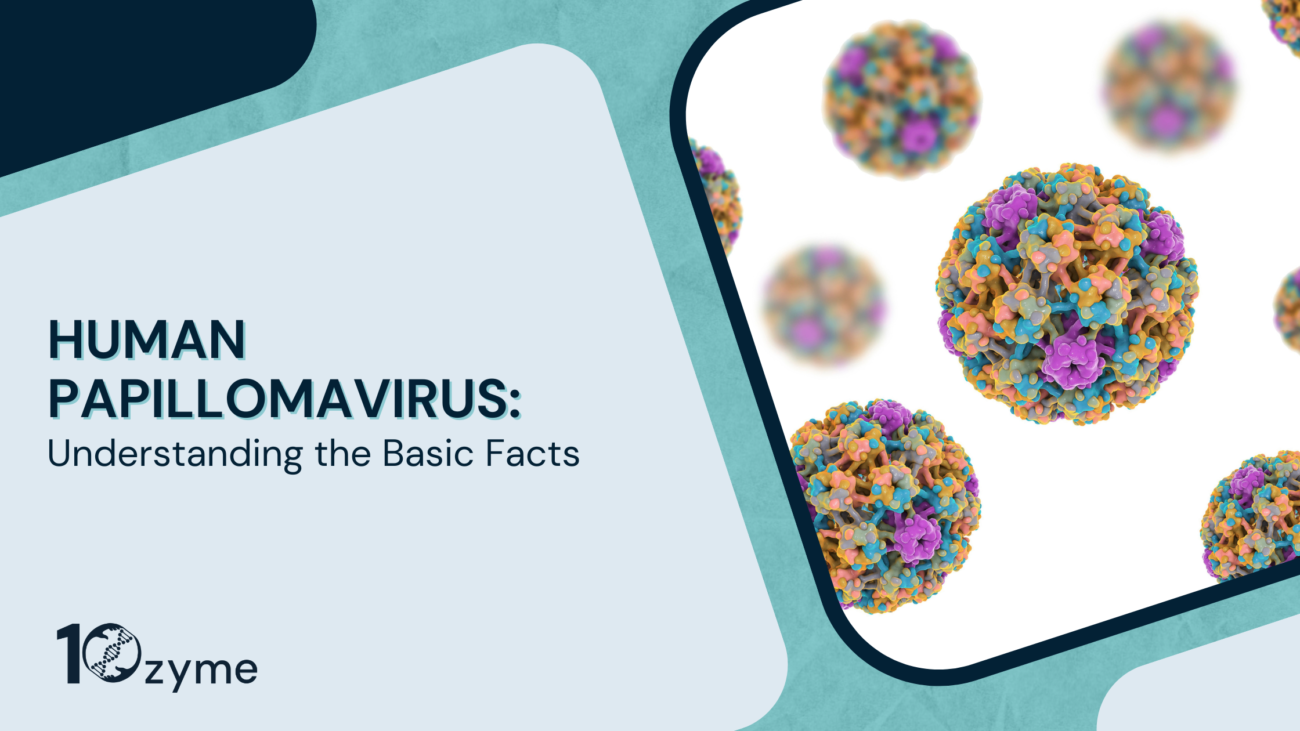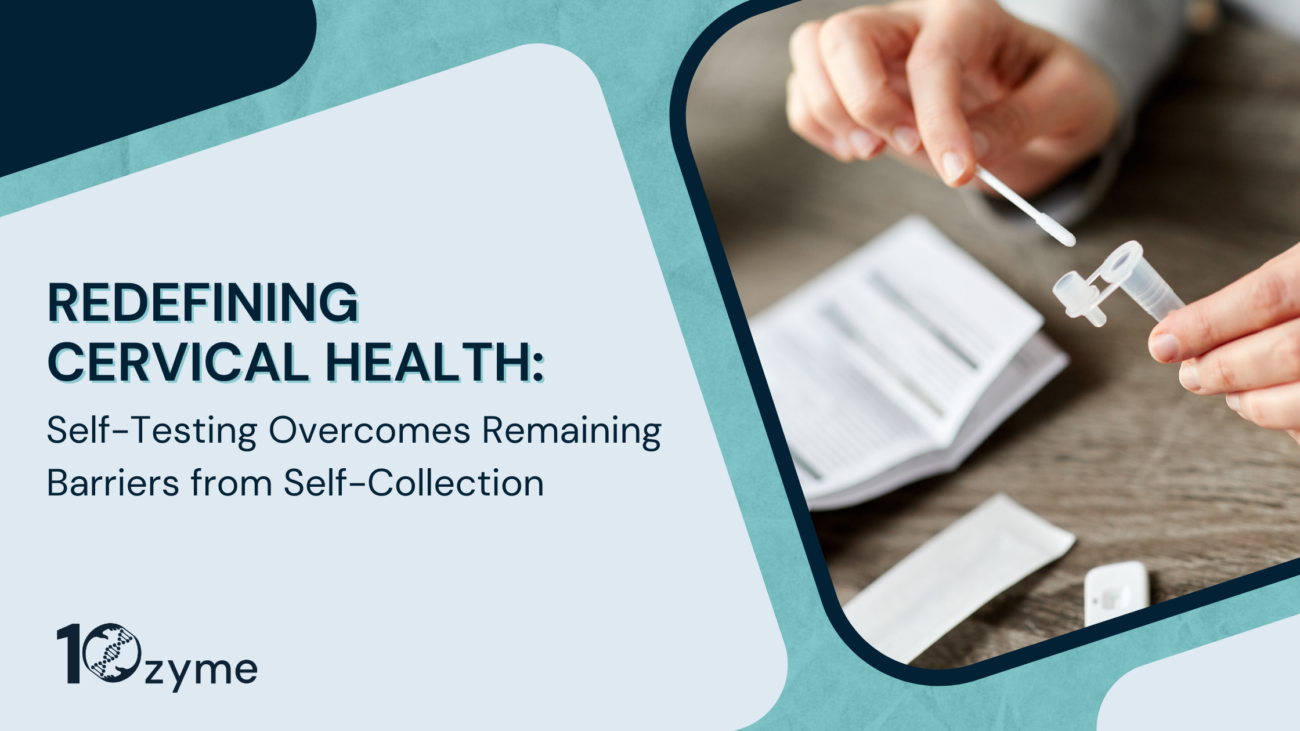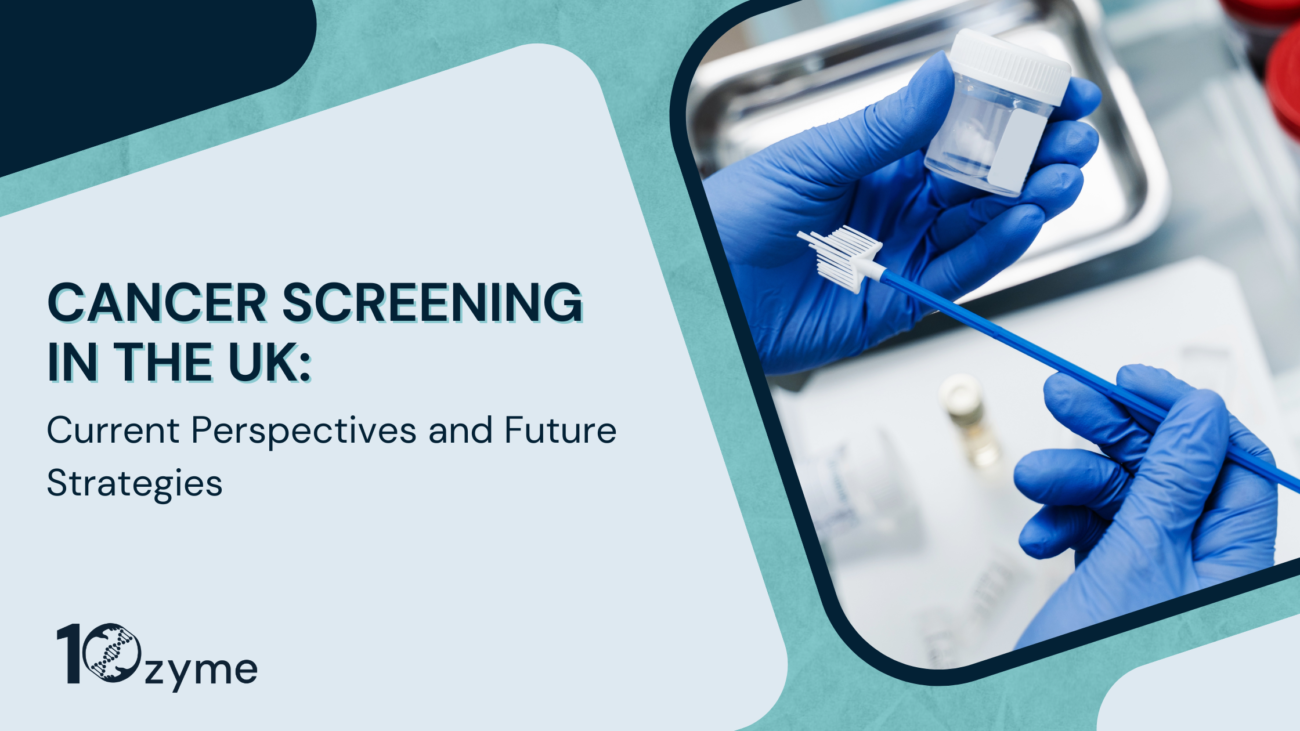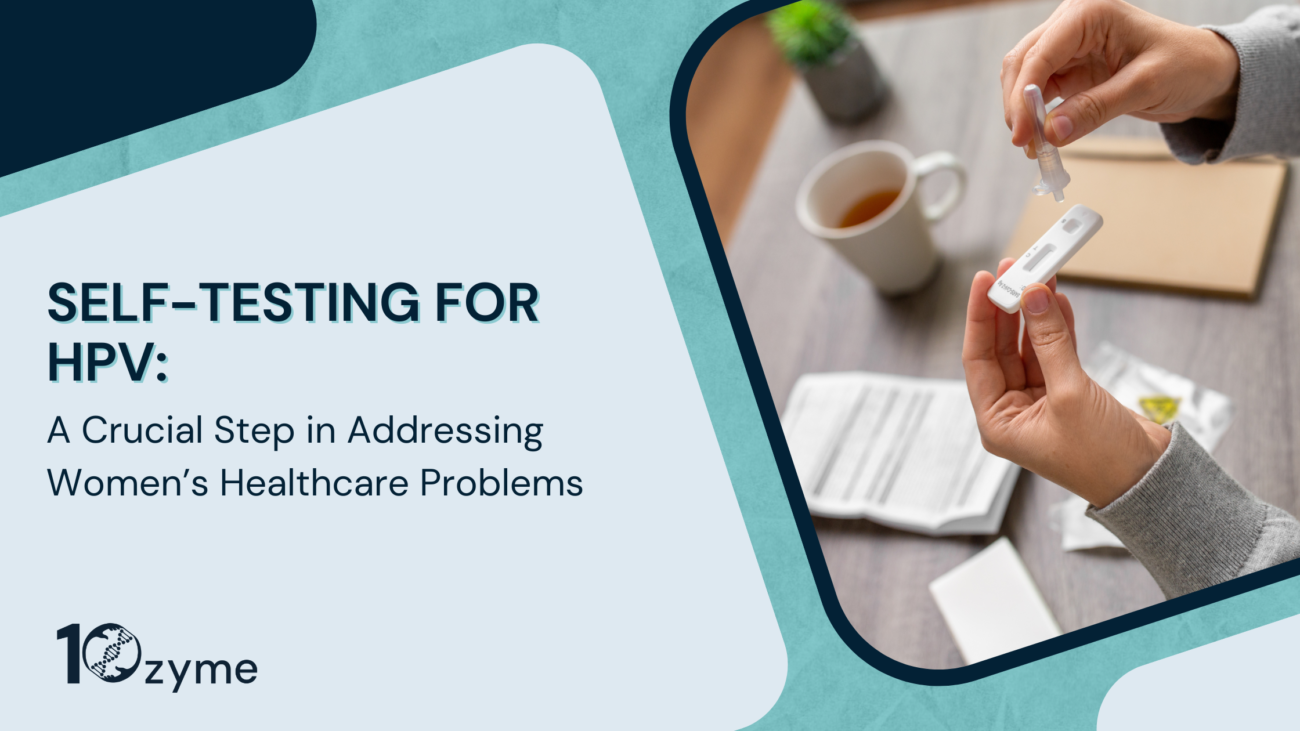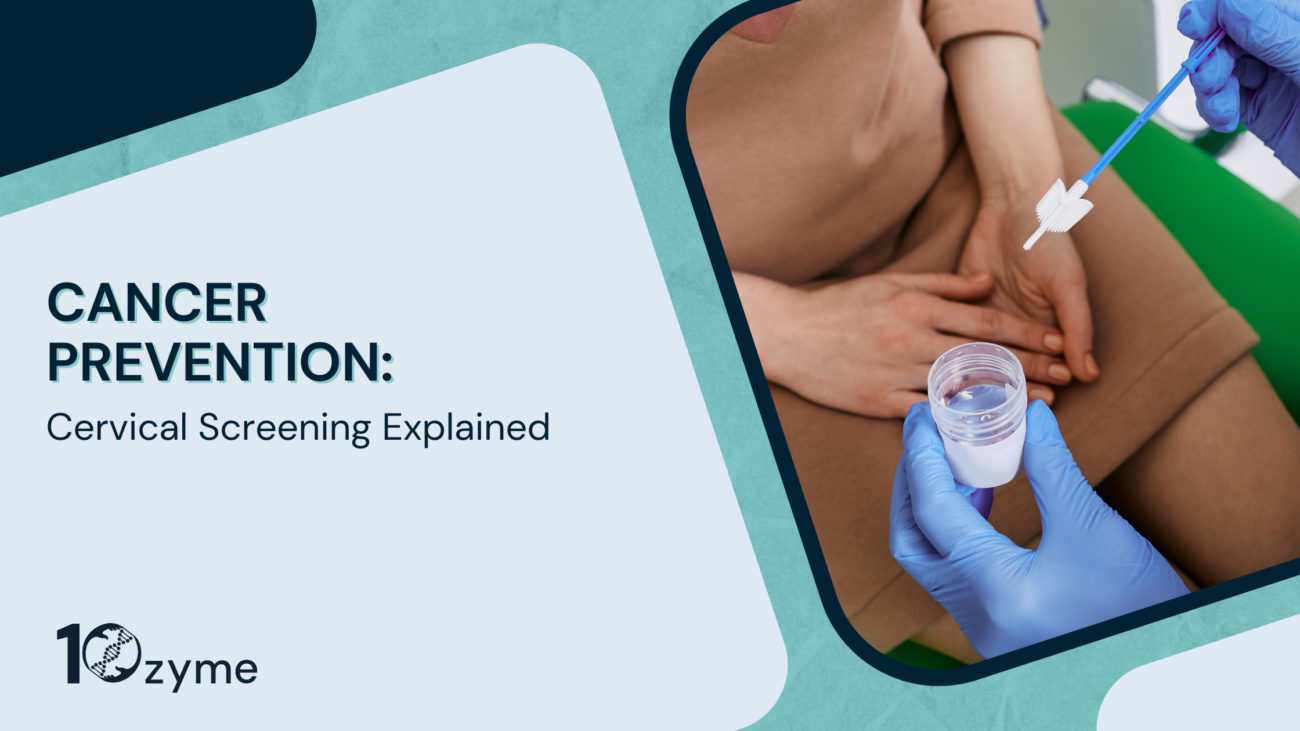Self-Sampling: The New Future for Cervical Screening?
Written by Dr Said Qabbaah, MBBS, MBA
Scientifically reviewed by Dr Angela Pine, BSc, MSc, PhD1 and Rhianne Kiley, BSc, MSc
The results of the HPValidate study, conducted from 2021 to 2023 as part of the NHS England Cervical Screening Programme, have been published. The study builds on the UK National Screening Committee’s 2019 recommendation to explore HPV self-sampling as a way to increase cervical screening participation.1
What is HPV?
Human papillomavirus (HPV) is a common sexually transmitted infection that affects about 8 in 10 sexually active people. Most HPV infections don’t show any symptoms or only cause painless growths, called warts, around the genital or anal areas.
However, some high-risk types can lead to changes in cells that could result in the development of certain types of cancer. High-risk HPV is found in nearly all (99.8%) cervical cancer cases.2
Cervical Screening
Regular cervical screening is crucial for preventing cervical cancer, which can develop without early symptoms. During screening, it first tests for high-risk HPV, and if detected, checks for abnormal cells in the cervix that could develop into cancer if left untreated.
In the UK, women and individuals assigned female at birth (AFAB) aged 25 to 64 should get screened every 3 to 5 years, depending on their age, HPV status, and location. However, about 30% of eligible people don’t take part in cervical screening, possibly missing the chance for early detection of abnormalities that could lead to cancer.3,6
There are many reasons for this, including logistical issues like work or childcare commitments, as well as embarrassment, fear, anxiety, and discomfort relating to the traditional screening method.4,5
Exploring a New Testing Method
The HPValidate study was carried out to explore self-sampling as an alternative to the traditional method for initial HPV testing. Self-sampling allows individuals to collect their own HPV test samples from the vaginal area using a swab or brush, rather than having a healthcare professional perform the cervical screening. This alternative method could make screening less uncomfortable and more accessible, potentially increasing participation rates.5
The research involved over 5,000 participants from GP practices and colposcopy clinics, comparing the accuracy and practicality of self-collected vaginal samples with the standard screening method.7
A further sub-study was also conducted across 38 general practices in England, carefully chosen to represent different communities. By studying how people from various backgrounds experienced self-sampling, researchers could better understand its potential as an alternative way to test for HPV.8
What the Study Revealed
Findings of the main study support further evaluation of self-sampling as a potential future option for all screening participants, pending additional research.1,7
Furthermore, the survey results on participants’ experiences and attitudes toward self-sampling revealed the following:8
- 98% reported a positive experience with self-sampling
- 85% expressed a preference for having a testing method choice
However, the survey also revealed that a significant proportion expressed concerns about making the ‘right’ decision. This was further emphasised by the fact that nearly half of the participants preferred receiving a clear recommendation from their healthcare provider on which method to choose.8
Key Points to Consider
While the HPValidate study showed promising potential for HPV self-sampling to increase cervical screening engagement, particularly among under-screened populations at higher risk of HPV-related diseases, it also highlighted several key areas that need to be addressed before widespread implementation.9
During the study, self-sampling was conducted in clinical settings. Therefore, before implementing at-home self-sampling, where self-collected samples are collected at home and sent to a lab by post, further assessment will be needed to assess the following:7
- How reliable is the sample transportation?
- Can the samples be preserved while being sent to the lab?
- How quickly can labs process these samples?
This is because the factors mentioned above may create additional barriers to screening, which could pose further challenges and must be carefully considered.
Additionally, offering a choice of screening methods may cause confusion or anxiety, especially if people are unsure which method suits their needs. The study revealed that many prefer clear recommendations from healthcare providers to reassure them and provide guidance, as they may feel less confident in making the decision themselves.8
Next Steps
Choosing between self-sampling and standard cervical screening requires informed decision-making, which relies on clear communication and adequate support to reduce confusion.8
Clear information and guidance are essential to help individuals make informed decisions. Tailored advice, education, and awareness campaigns should thoroughly explain the benefits and limitations of each option and address any concerns effectively.
Some people may even need additional resources or personalised counseling to address health inequities, to ensure that everyone, regardless of socioeconomic status, background, or education, can choose their screening method with confidence.
In addition to further studies that more effectively assess self-sampling, detailed surveys are needed to gain a deeper understanding of individuals’ specific needs and expectations regarding this new approach as a potential future screening method.
Summary
The HPValidate study offers promising insights for improving cervical screening, highlighting the potential of self-sampling to increase flexibility and control. As an alternative method for HPV testing, it could boost screening rates and help the NHS move closer to its goal of eradicating cervical cancer. However, the study also highlights the complexities of introducing choice in healthcare.
Therefore, several challenges must be addressed before self-sampling can become a standard option. Successfully integrating it into the NHS Cervical Screening Programme will require careful planning, including improved education and greater awareness among the eligible population, as well as thorough evaluation of its effectiveness and a strong commitment to overcoming potential barriers to implementation.
By embracing innovation and proactively addressing any challenges encountered, we move closer to a future where no one is left behind in the effort to overcome cervical cancer, and ultimately, to eliminate it for good.
10zyme: Advancing women’s health
We’re developing a groundbreaking self-test with instant results to detect the main cause of cervical cancer: high-risk HPV. Detecting infections early prevents cancer ever developing.
By enabling self-testing, we aim to empower women, overcome stigma and anxiety, and help eliminate a disease killing hundreds of thousands a year globally. See our Education Section to find out more.
Please follow and support us on social media: LinkedIn, Instagram, and TikTok.
References:
- UK National Screening Committee (UK NSC). (2024). Research and analysis: HPValidate study summary. [Online]. Available at: https://www.gov.uk/government/publications/uk-nsc-hpvalidate-study-findings/hpvalidate-study-summary (Accessed 26/11/2024)
- Cancer Research UK (CRUK). (2023). Risks and causes of cervical cancer. [Online]. Available at: https://www.cancerresearchuk.org/about-cancer/cervical-cancer/risks-causes (Accessed 26/11/2024)
- NHS Digital. (2024). Cervical Screening Programme, England – 2023-2024, National Statistics. [Online]. Available at: https://digital.nhs.uk/data-and-information/publications/statistical/cervical-screening-annual/england-2023-24 (Accessed 26/11/2024)
- Petersen, Z., Jaca, A., Ginindza, T.G., Maseko, G., Takatshana, S., Ndlovu, P., Zondi, N., Zungu, N., Varghese, C., Hunting, G., Parham, G., Simelela, P. and Moyo, S. (2022). Barriers to uptake of cervical cancer screening services in low-and-middle-income countries: a systematic review. BMC Womens Health, 22:486. doi:10.1186/s12905-022-02043-y
- Aimagambetova, G., Atageldiyeva, K., Marat, A., Suleimenova, A., Issa, T., Raman, S., Huang, T., Ashimkhanova, A., Aron, S., Dongo, A., Iztleuov, Y., Shamkeeva, S. and Azizan, A. (2024). Comparison of diagnostic accuracy and acceptability of self-sampling devices for human Papillomavirus detection: A systematic review. Prev Med Rep, 38:102590. doi:10.1016/j.pmedr.2024.102590
- NHS England. (2024). NHS urges more women to take up cervical screening invitations. [Online]. Available at: https://www.england.nhs.uk/2024/06/nhs-urges-more-women-to-take-up-cervical-screening-invitations/ (Accessed 27/11/2024)
- Queen Mary University of London. (2024). Clinical Validation Report. HPValidate: clinical validation of hrHPV test system using self-collected vaginal samples in NHS England commissioned laboratories providing cervical screening services. [Online]. Report retrieved from: https://www.gov.uk/government/publications/uk-nsc-hpvalidate-study-findings/hpvalidate-study-summary (Accessed 27/11/2024)
- Marlow, L., Drysdale, H. and Waller, J. (2024). Attitudes towards being offered a choice of self-sampling or clinician sampling for cervical screening: A cross-sectional survey of women taking part in a clinical validation of HPV self-collection devices. Journal of Medical Screening, 0(0). doi:10.1177/09691413241283356
- Serrano, B., Ibáñez, R., Robles, C., Peremiquel-Trillas, P., Sanjosé, S. and Bruni, L. (2022). Worldwide use of HPV self-sampling for cervical cancer screening. Preventive Medicine, 154. doi:10.1016/j.ypmed.2021.106900

